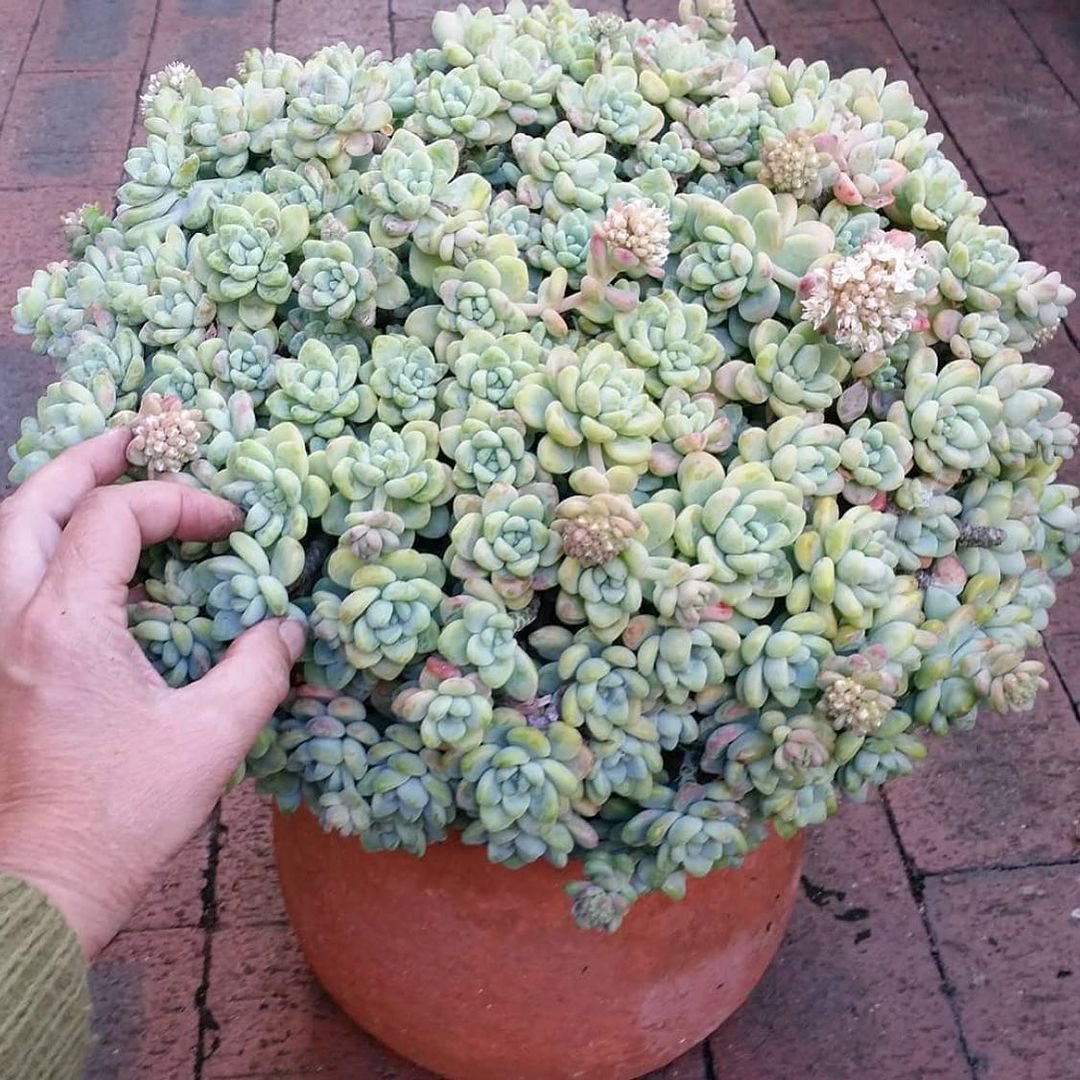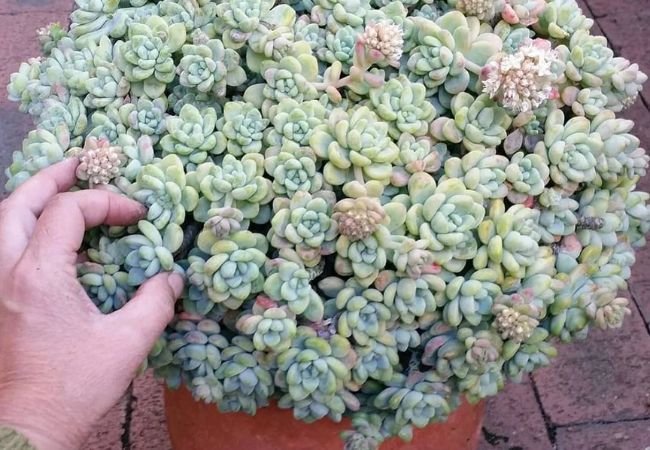Discover the secrets to cultivating beautiful and low-maintenance sedum plants. This comprehensive guide covers everything you need to know, from choosing the right varieties and preparing the soil to watering, pruning, and propagating these hardy succulents. Transform your garden with the vibrant colors and textures of sedums while enjoying their ease of care.
In the ever-evolving world of gardening, few plants capture the essence of low-maintenance beauty quite like sedums. These hardy succulents, with their diverse array of colors, textures, and forms, offer a delightful addition to any outdoor space. Whether you’re a seasoned green thumb or a budding gardener, the joy of sedum cultivation lies in their unparalleled resilience and striking visual appeal. This beginner’s guide will equip you with the knowledge and techniques to transform your garden into a vibrant tapestry of sedum splendor.
Here’s a short chart with information about Sedums (Sedum spp.):
| Aspect | Information |
|---|---|
| Botanical Name | Sedum spp. |
| Common Names | Stonecrop, Sedum |
| Plant Type | Herbaceous perennial, succulent |
| Zones | 3-10 (varies by species) |
| Exposure | Full sun to partial shade |
| Bloom Time | Summer to fall |
| Height/Spread | 3 inches to 2 feet tall, 6 inches to 2 feet wide (varies by species) |
Understanding the Allure of Sedums

A Botanical Marvel
Before we delve into the intricacies of sedum cultivation, let’s take a moment to appreciate the remarkable nature of these plants. Sedums, also known as stonecrop, belong to the Crassulaceae family and boast an impressive diversity, with species native to various regions across the globe, including North America, Europe, and Asia.
Adaptability and Endurance
One of the most alluring aspects of sedums is their incredible adaptability and endurance. These resilient plants thrive in harsh conditions, making them an ideal choice for drought-tolerant and low-maintenance gardening. Their fleshy, succulent leaves enable them to store water, allowing them to withstand periods of drought with ease.
A Kaleidoscope of Colors and Textures
From vibrant greens to rich plums and bronzes, sedums offer a captivating palette of colors and textures. Their diverse forms range from tall, upright varieties adorned with striking flower clusters to trailing and mat-forming types that create a lush, textured carpet across the ground. This versatility allows gardeners to craft truly unique and visually stunning displays.
Selecting the Perfect Sedum Varieties
Popular Sedum Choices
With an array of sedum varieties to choose from, it can be overwhelming to decide which ones to incorporate into your garden. Here are some popular options to consider:
Sedum ‘Autumn Joy’
A classic choice, featuring large, flat clusters of pink-to-russet flower heads that bloom in late summer and autumn.
Sedum ‘Dragon’s Blood’
As its name suggests, this sedum boasts striking dark red-purple foliage that adds a bold touch to any garden.
Sedum ‘Brilliant’
For a pop of vibrant color, this variety features bright pink flower clusters that bloom in late summer.
Sedum ‘Angelina’
A low-growing, ground-covering sedum with succulent, golden-yellow foliage that turns orange-red in the fall.
Considering Growth Habits and Bloom Times
When selecting sedum varieties, consider their growth habits (upright, trailing, or mat-forming), bloom times, and color preferences. This will allow you to create a harmonious and visually appealing display that complements your existing landscape.
Planting and Growing Sedums with Ease
Soil Preparation and Planting
Sedums are remarkably adaptable to various soil types and growing conditions, but they do prefer well-draining soil and full sun exposure. To ensure optimal growth, amend your soil with compost or other organic matter to improve drainage and nutrient content. When planting, space your sedum plants according to their mature size, typically 12-18 inches apart for upright varieties and 6-12 inches for ground-covering types.
Watering and Pruning
During their first growing season, water your sedums regularly until their roots are well-established. Once established, these drought-tolerant plants can go for extended periods without water, requiring only occasional watering during prolonged dry spells. Prune your sedums in late winter or early spring to remove any dead or damaged growth and encourage new, compact growth.
Caring for Sedums with Minimal Effort
Watering and Fertilizing
One of the greatest benefits of growing sedums is their low-maintenance nature. After the first growing season, they are incredibly drought-tolerant and only need occasional watering during prolonged dry spells. Overwatering can lead to root rot, so let the soil dry out between waterings. Sedums have relatively low nutrient requirements, but a light application of balanced fertilizer in early spring can promote healthy growth and abundant blooms.
Pest and Disease Management
Sedums are generally resistant to pests and diseases, but it’s important to keep an eye out for issues like aphids, mealybugs, or fungal infections. Address any problems promptly with appropriate organic treatments to maintain the health and vitality of your plants.
Winter Protection
In colder climates, some sedum varieties may benefit from a light layer of mulch or protection during the winter months. This extra insulation can help ensure your plants survive the harsh winter conditions and thrive once spring arrives.
Propagating Sedums for Endless Enjoyment
Stem and Leaf Cuttings
One of the most rewarding aspects of growing sedums is their ability to propagate easily. Take stem cuttings from healthy plants in late spring or early summer, allow the cut ends to callous over for a few days, and then plant them in well-draining soil or a soilless potting mix. Alternatively, remove healthy leaves from your sedum plants and lay them on top of a well-draining soil or potting mix. Keep the soil moist, and new plants will eventually sprout from the base of the leaves.
Division for Expansion
In early spring, carefully divide mature sedum plants by separating the offshoots or side shoots from the main plant. Replant these divisions in their new locations, and you’ll have an instant expansion of your sedum collection.
Sedums are truly a gardener’s delight, offering a captivating blend of beauty, resilience, and low-maintenance care. By following the guidance provided in this beginner’s guide, you’ll be well-equipped to cultivate a stunning sedum display that will enliven your outdoor spaces with vibrant colors and textures. Embrace the joy of sedum gardening, and revel in the rewards of these hardy succulents that promise to thrive with minimal effort on your part.








Leave a Reply